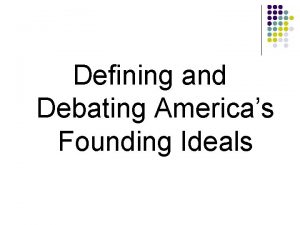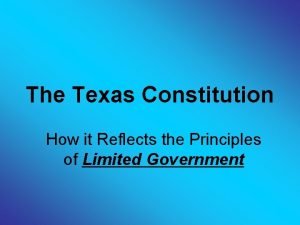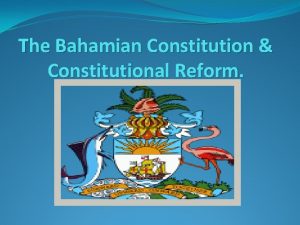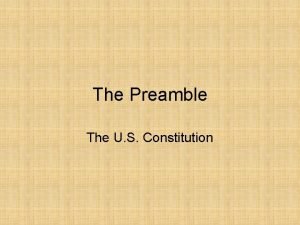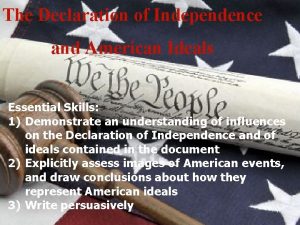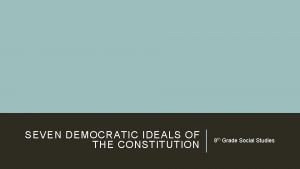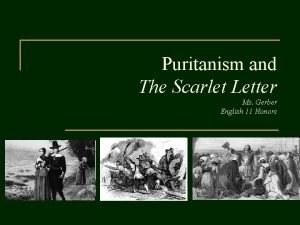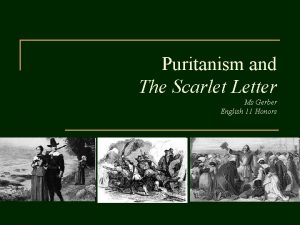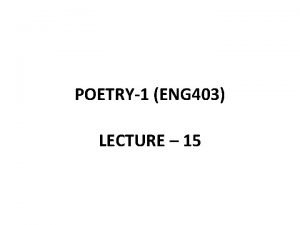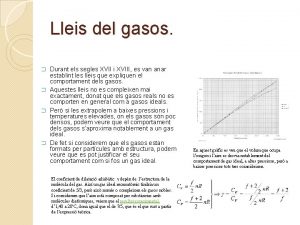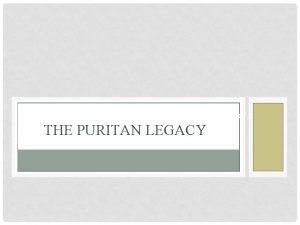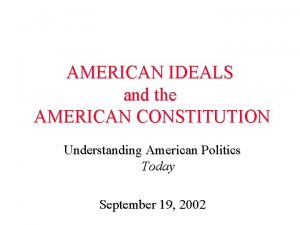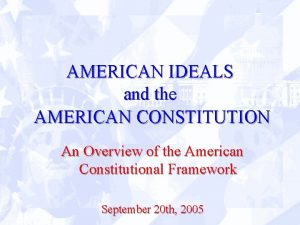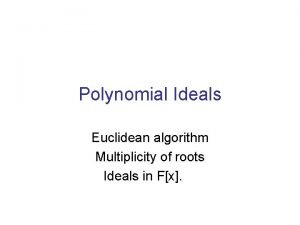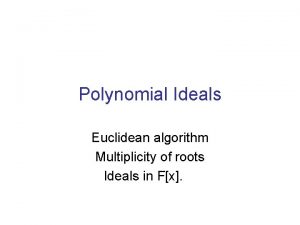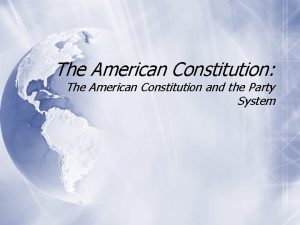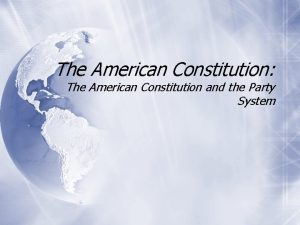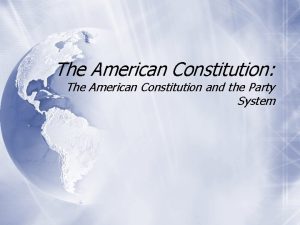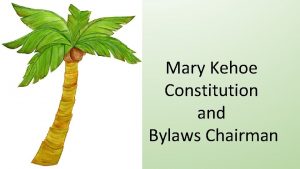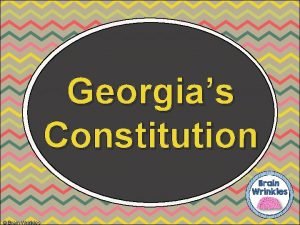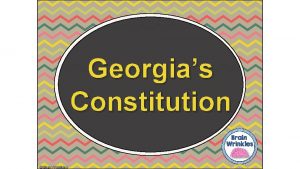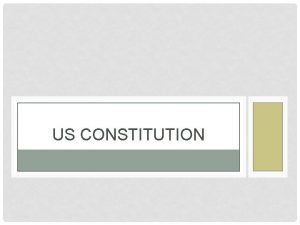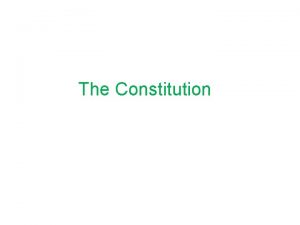AMERICAN IDEALS and the AMERICAN CONSTITUTION An Overview

















- Slides: 17

AMERICAN IDEALS and the AMERICAN CONSTITUTION An Overview of the American Constitutional Framework September 20 th, 2005

The Constitution of the United States • Just what is a constitution? – the formal rules for collective political decision-making – formal limits on what spheres are subject to collective political decisions

The Constitution of the United States • Just what is a constitution? • What is the main thrust of the American Constitution? – protecting against the tyrannical use of power by government

The Constitution of the United States n n Just what is a constitution? What is the main thrust of the American Constitution? How to Protect Against the Tyrannical Use of Power by the Executive? – make it accountable to the people – limit what it can do How to Limit What a Government Can Do? – legal prohibitions – fragmenting power

THE DECLARATION OF INDEPDENDENCE (1776) “We hold these truths to be self-evident, that all men are created equal; that they are endowed by their Creator with certain inalienable rights; that among these, are life, liberty, and the pursuit of happiness. That, to secure these rights, governments are instituted among men, deriving their just powers from the consent of the governed; that, whenever any form of government becomes destructive of these ends, it is the right of the people to alter or abolish it. . . ”

The Constitution of the United States of America (1787) “We the people of the United States, in Order to form a more perfect Union, establish Justice, insure domestic tranquility, provide for the common defence, promote the general welfare, and secure the Blessings of Liberty to ourselves and our Posterity, do ordain and establish this Constitution for the United States of America. ”

The US Constitution • the constitution of the Constitution seven articles (1787 -88) – first ten amendments -- the Bill of Rights (1791) – seventeen additional amendments (17981992) –

The US Constitution • function of the Constitution creates the three branches of government at the federal level – creates the two orders of government (federal government and state governments) – limits governments in their relationships with citizens –

Legislates, Controls Budget, Approves Nominations and Treaties, Impeach, Override Veto VETO! Declare Laws Unconstitutional Confirms Nominations, Impeach Declare Acts Unconstitutional Nominates Judges

1. ) Establishing the Three Branches of Government • Separation of Powers • Checks and Balances

2. ) Establishing the Two Orders of Government -- Federalism • Why Have a Federal Government? practical reasons – philosophical reasoning – • Why Maintain State Governments? practical reasons – philosophical reasoning – • Orders of Government vs. Levels of Government

3. ) Limits on Government • Bill of Rights – the first Ten Amendments (1789) – “Congress shall make no law. . . ”

Amending the Constitution (Article V) • Methods of Amending the Constitution – Proposing Amendments. . . • • – 2/3 of both Houses of Congress or 2/3 of state legislatures Ratifying Amendments. . . • 3/4 of states (either by the state legislature or special convention)

Recent Amendments/Proposals for Amendment • 27 th Amendment (1992) -- Congressional Pay • proposed amendments – Equal Rights Amendment – Term Limits Amendment – Flag Amendment – Gun Control. . . revising the 2 nd Amendment – Balanced Budget Amendment

Assessing the American Constitutional Framework (. . . from a democratic perspective) • bicameral legislature • indirectly elected president (e. g. electoral college) • unelected Supreme Court • separation of powers/checks and balances • federalism • formal limits on the powers of government • rigid constitution

Democracy -- Protection of Individual Rights Low (Emphasis on General Welfare) Protection of Individual Rights High UNITED STATES

Final Point. . . • American Constitution grounded in emphasis on rights of individual and limits on government • American emphasis on mass political participation emerged out of American political context, political culture and political practice
 History alive pursuing american ideals
History alive pursuing american ideals Discovering american ideals in primary sources
Discovering american ideals in primary sources Texas constitution vs us constitution
Texas constitution vs us constitution Nc constitution vs us constitution
Nc constitution vs us constitution Constitution what is constitution
Constitution what is constitution Lesson 1 principles of the constitution
Lesson 1 principles of the constitution There are people with gods and lofty ideals
There are people with gods and lofty ideals Example of preamble
Example of preamble American constitution
American constitution Ideals in the declaration of independence
Ideals in the declaration of independence 7 democratic ideals
7 democratic ideals Transcendentalist ideals
Transcendentalist ideals Puritan ideals
Puritan ideals Puritan ideals
Puritan ideals Puritan ideals
Puritan ideals Political background of puritan age
Political background of puritan age Constant gasos ideals
Constant gasos ideals Puritan ideals
Puritan ideals

